

Return to the Everglades
It’s been four years since we first traveled to the Florida Everglades to meet the Python Cowboy in his native environment. The ‘Glades,’ an incredibly important ecosystem that covers almost 8,000 square miles was then, and still is, under attack by a growing population of non-native Burmese pythons. Likely introduced to the Everglades as castoffs by pet owners, the pythons have flourished to a fault thanks to the diversity and volume of prey and a climate well-suited for them. With few natural predators to control their populations, the constrictors established their dominance in and around the mangroves, sawgrass marshes, and pine flatwoods that make up the Everglades. Their diet includes most of the native mammals, birds, fish, and reptiles that call the Everglades home. So far, only humans like the Python Cowboy have been able to slow their swamp invasion.
It’s been four years since we first traveled to the Florida Everglades to meet the Python Cowboy in his native environment. The ‘Glades,’ an incredibly important ecosystem that covers almost 8,000 square miles was then, and still is, under attack by a growing population of non-native Burmese pythons. Likely introduced to the Everglades as castoffs by pet owners, the pythons have flourished to a fault thanks to the diversity and volume of prey and a climate well-suited for them. With few natural predators to control their populations, the constrictors established their dominance in and around the mangroves, sawgrass marshes, and pine flatwoods that make up the Everglades. Their diet includes most of the native mammals, birds, fish, and reptiles that call the Everglades home. So far, only humans like the Python Cowboy have been able to slow their swamp invasion.
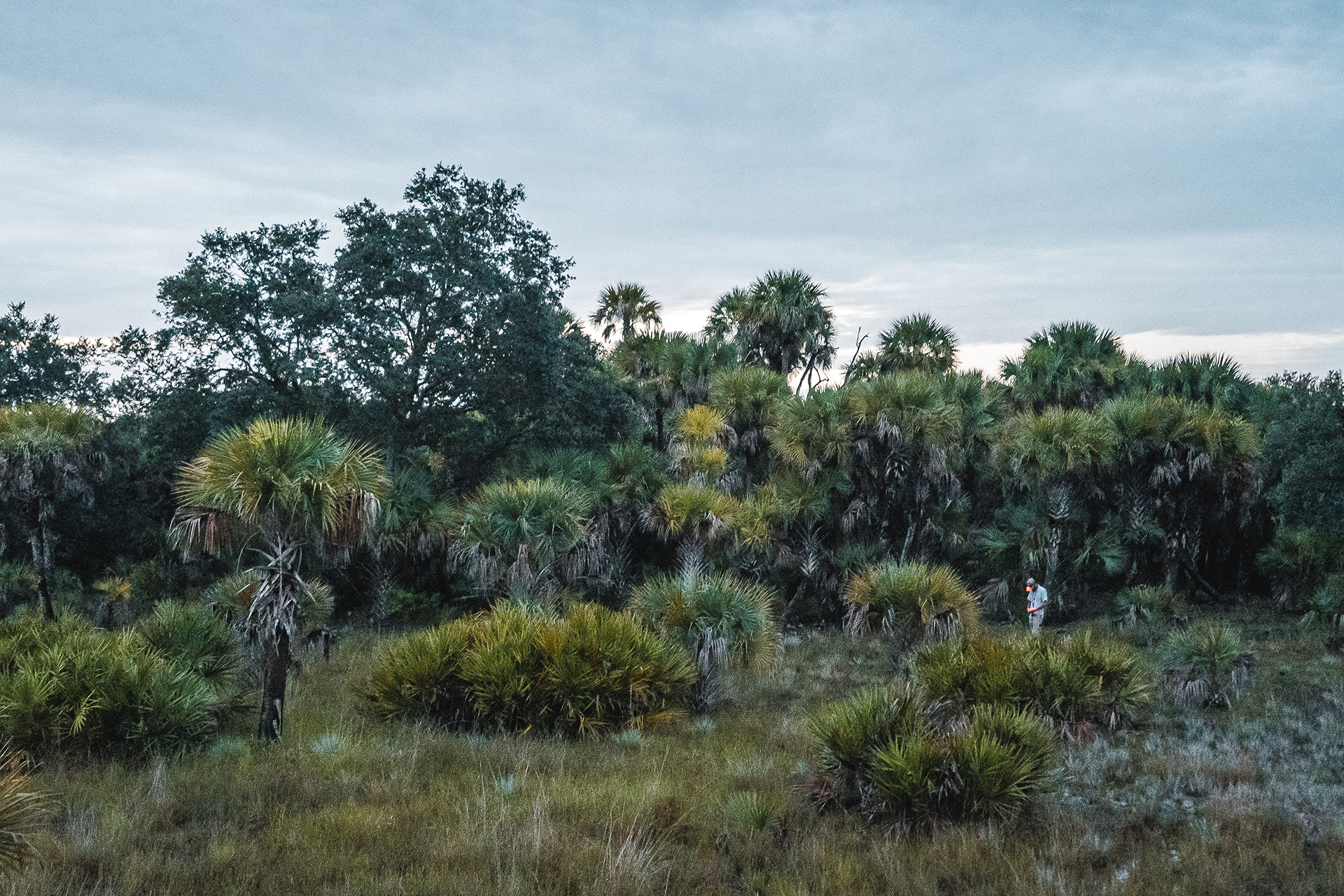
Growing to lengths up to 12 or more feet on average—the largest ever caught in the Everglades was over 18 feet long—means that the pythons can and do consume small and large animals with abandon. The remote location of the Everglades also means that the pythons have had the entire swamp virtually to themselves for decades. In the last ten years or so, the shrinking population of raccoons, squirrels, rabbits, opossums, turtles, alligators, and birds of all types has sounded the alarm that, left unchecked, there wouldn’t be an ecosystem at all left in the Everglades if something wasn’t done.
Growing to lengths up to 12 or more feet on average—the largest ever caught in the Everglades was over 18 feet long—means that the pythons can and do consume small and large animals with abandon. The remote location of the Everglades also means that the pythons have had the entire swamp virtually to themselves for decades. In the last ten years or so, the shrinking population of raccoons, squirrels, rabbits, opossums, turtles, alligators, and birds of all types has sounded the alarm that, left unchecked, there wouldn’t be an ecosystem at all left in the Everglades if something wasn’t done.

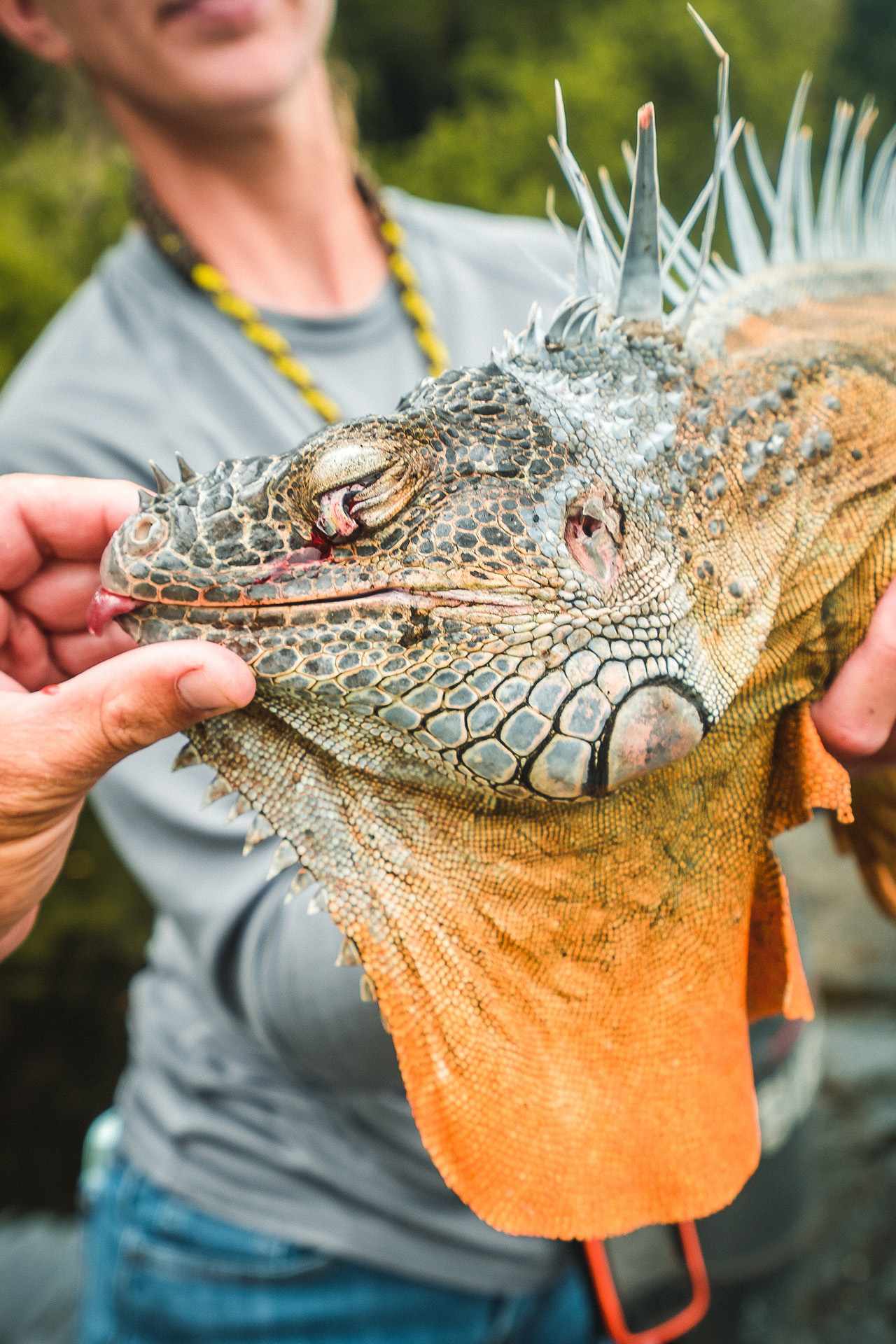
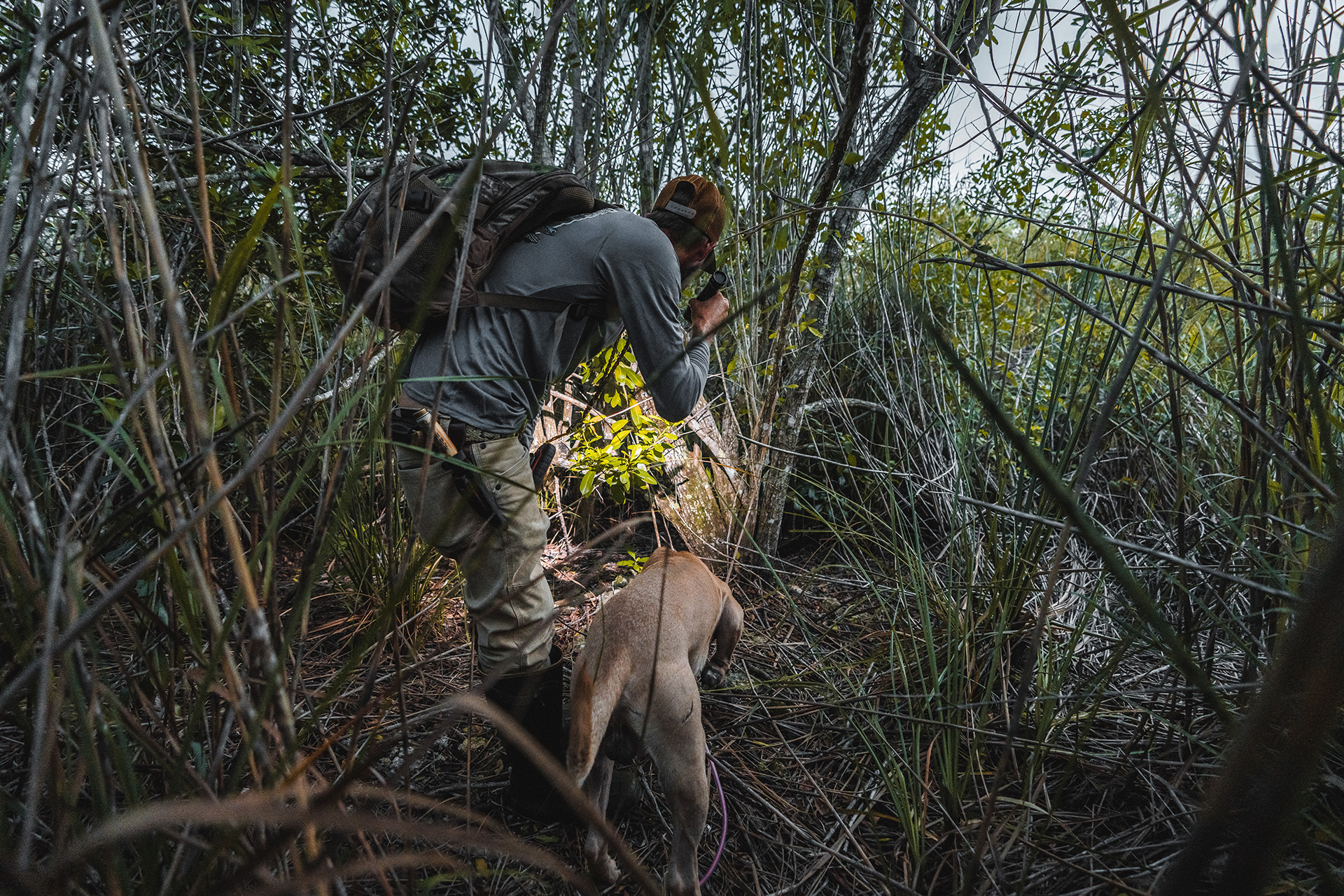
Once people became aware that snakes were eating everything in the big swamp, efforts to control the python population expanded rapidly. Enter the Python Cowboy. Or Mike Kimmel, to the rest of society. Without other natural predators to stop them, Mike and his fellow trappers have stepped in to fight the battle that mankind likely started in the ‘70s and ‘80s. These efforts have included a variety of hunting, trapping, and public education campaigns designed to highlight the issue and encourage the aggressive removal of them from the Everglades.
These efforts have been challenging, to say the least, because the pythons are elusive, difficult to find, and at home in the swampy environment that is overtly hostile to the bipeds who enter. Mike, like many others, catches most of his pythons by hand and he keeps them alive instead of just shooting them when he sees them. And he’s got a few scars as proof. Like Quint in the classic movie Jaws, his scar stories would make most of us embarrassed to even bring up where we got ours. You can see some vids of his exploits on his socials at Martin County Trapping & Wildlife Rescue on FB and Python Cowboy on IG.
Once people became aware that snakes were eating everything in the big swamp, efforts to control the python population expanded rapidly. Enter the Python Cowboy. Or Mike Kimmel, to the rest of society. Without other natural predators to stop them, Mike and his fellow trappers have stepped in to fight the battle that mankind likely started in the ‘70s and ‘80s. These efforts have included a variety of hunting, trapping, and public education campaigns designed to highlight the issue and encourage the aggressive removal of them from the Everglades.
These efforts have been challenging, to say the least, because the pythons are elusive, difficult to find, and at home in the swampy environment that is overtly hostile to the bipeds who enter. Mike, like many others, catches most of his pythons by hand and he keeps them alive instead of just shooting them when he sees them. And he’s got a few scars as proof. Like Quint in the classic movie Jaws, his scar stories would make most of us embarrassed to even bring up where we got ours. You can see some vids of his exploits on his socials at Martin County Trapping & Wildlife Rescue on FB and Python Cowboy on IG.

Despite the obvious challenges of finding and capturing these snakes, people like Mike have stepped in and made a real difference. The state of Florida established campaigns to fight the python’s continued dominance in the area, and the Florida Fish and Wildlife Conservation Commission has gone as far as to create the Python Action Team – Removing Invasive Constrictors (PATRIC) to help coordinate and reward efforts to remove these giant predators. Additionally, the South Florida Water Management District Governing Board started the Python Elimination Program (PEM) in 2017 and hired “python removal agents” to help in the fight.
As it turns out, removing the pythons from the swamp, especially the bigger ones that can cause the most damage, can put food on the table, both literally and figuratively. And their efforts have made a difference; the PATRIC and PEM programs, and the people who are a part of it, are responsible for increasing the numbers of pythons being caught each year from the low hundreds to between 1,600 and 3,000 per year from 2017 to the present. There’s even a Super Bowl of python-catching; the Florida Python Challenge is a ten-day annual contest that puts up a $10k prize for the most pythons captured, plus more money for a variety of different categories.
Despite the obvious challenges of finding and capturing these snakes, people like Mike have stepped in and made a real difference. The state of Florida established campaigns to fight the python’s continued dominance in the area, and the Florida Fish and Wildlife Conservation Commission has gone as far as to create the Python Action Team – Removing Invasive Constrictors (PATRIC) to help coordinate and reward efforts to remove these giant predators. Additionally, the South Florida Water Management District Governing Board started the Python Elimination Program (PEM) in 2017 and hired “python removal agents” to help in the fight.
As it turns out, removing the pythons from the swamp, especially the bigger ones that can cause the most damage, can put food on the table, both literally and figuratively. And their efforts have made a difference; the PATRIC and PEM programs, and the people who are a part of it, are responsible for increasing the numbers of pythons being caught each year from the low hundreds to between 1,600 and 3,000 per year from 2017 to the present. There’s even a Super Bowl of python-catching; the Florida Python Challenge is a ten-day annual contest that puts up a $10k prize for the most pythons captured, plus more money for a variety of different categories.
Though no one knows exactly how many pythons are out there, estimates are that the numbers are in the tens of thousands. What is known is that, in a relatively short period of time, trappers like the Python Cowboy have made a difference. While the sneaky snakes will likely never be completely eradicated, their numbers—and size—have been greatly reduced. Wildlife that just a few years ago was suffering from 90% population decreases are now making a comeback, and many of the largest snakes are no longer haunting the Everglades. The average snake catch size is down to around six feet, which is testament to the effect that Mike and his fellow trappers and hunters have had for the greater good.
Though no one knows exactly how many pythons are out there, estimates are that the numbers are in the tens of thousands. What is known is that, in a relatively short period of time, trappers like the Python Cowboy have made a difference. While the sneaky snakes will likely never be completely eradicated, their numbers—and size—have been greatly reduced. Wildlife that just a few years ago was suffering from 90% population decreases are now making a comeback, and many of the largest snakes are no longer haunting the Everglades. The average snake catch size is down to around six feet, which is testament to the effect that Mike and his fellow trappers and hunters have had for the greater good.

More Than Just a Snake Problem
The pythons, however, are not the only invaders plaguing Florida. The temperate climate and abundant food sources have made it ground zero for an army of other unwelcome species as well. Green iguanas are now a common sight in Florida and can be found in urban areas, suburban neighborhoods, and natural habitats like parks and wetlands. Feral pigs are everywhere they can find food and making a huge mess while they’re going it. And Egyptian geese are making a mess and eating their way through southern Florida. While not the only problem animals of Florida, they are creating some of the most pressing issues.
The pythons, however, are not the only invaders plaguing Florida. The temperate climate and abundant food sources have made it ground zero for an army of other unwelcome species as well. Green iguanas are now a common sight in Florida and can be found in urban areas, suburban neighborhoods, and natural habitats like parks and wetlands. Feral pigs are everywhere they can find food and making a huge mess while they’re going it. And Egyptian geese are making a mess and eating their way through southern Florida. While not the only problem animals of Florida, they are creating some of the most pressing issues.


The Python Cowboy has kept busy with all of these (and other) swamp invaders trying to take over his home. Mike’s Martin County Trapping and Wildlife Rescue has been firing on all cylinders to try to turn the tide against some invasive species and create a space to hold others in check. They have created a cottage industry that helps educate the population and remove unwanted trespassers from FL the hard way (also, the fun way). The result has been a huge increase in awareness by the general population and an increase in volunteers and trappers who are willing to take on the pythons, iguanas, pigs, and other animals that don’t belong in Florida. Along with Moose, his specially-trained dog, he has changed the fight for the long haul. He even takes clients out to get in on the action, so if you’re interested in participating in repelling invasive species, go see him at pythoncowboy.com and send him an email to get in on the fight.
The Python Cowboy has kept busy with all of these (and other) swamp invaders trying to take over his home. Mike’s Martin County Trapping and Wildlife Rescue has been firing on all cylinders to try to turn the tide against some invasive species and create a space to hold others in check. They have created a cottage industry that helps educate the population and remove unwanted trespassers from FL the hard way (also, the fun way). The result has been a huge increase in awareness by the general population and an increase in volunteers and trappers who are willing to take on the pythons, iguanas, pigs, and other animals that don’t belong in Florida. Along with Moose, his specially-trained dog, he has changed the fight for the long haul. He even takes clients out to get in on the action, so if you’re interested in participating in repelling invasive species, go see him at pythoncowboy.com and send him an email to get in on the fight.

Hunting the Hunter
On our third trip to Florida to get a pulse check on this fight for the swamps, we spent some time near Lake Okeechobee at the Seminole Prairie Outfitters. That’s where Mike, Jason Williams and Chris SantAngelo gave us the rundown on the positives they are seeing when it comes to invasive species. We were also introduced to the concept of hunting alligators.
Alligators have been around for a long, long time, dating back to the Cretaceous period at least 85 million years ago. They were so prolific that they were once found in virtually every body of water throughout North and South America. Over the eons, evolution has allowed alligators to adapt perfectly to aquatic life and made them the apex predator they are today. They have webbed feet and long tails to move quickly through the water, powerfully strong jaws lined with sharp teeth, tough skin reinforced with bony plates (called osteoderms) for protection, the ability to heal from wounds as if they were Wolverine, and lungs that allow them to stay underwater for extended periods of time to drown their prey and avoid danger.
On our third trip to Florida to get a pulse check on this fight for the swamps, we spent some time near Lake Okeechobee at the Seminole Prairie Outfitters. That’s where Mike, Jason Williams and Chris SantAngelo gave us the rundown on the positives they are seeing when it comes to invasive species. We were also introduced to the concept of hunting alligators.
Alligators have been around for a long, long time, dating back to the Cretaceous period at least 85 million years ago. They were so prolific that they were once found in virtually every body of water throughout North and South America. Over the eons, evolution has allowed alligators to adapt perfectly to aquatic life and made them the apex predator they are today. They have webbed feet and long tails to move quickly through the water, powerfully strong jaws lined with sharp teeth, tough skin reinforced with bony plates (called osteoderms) for protection, the ability to heal from wounds as if they were Wolverine, and lungs that allow them to stay underwater for extended periods of time to drown their prey and avoid danger.
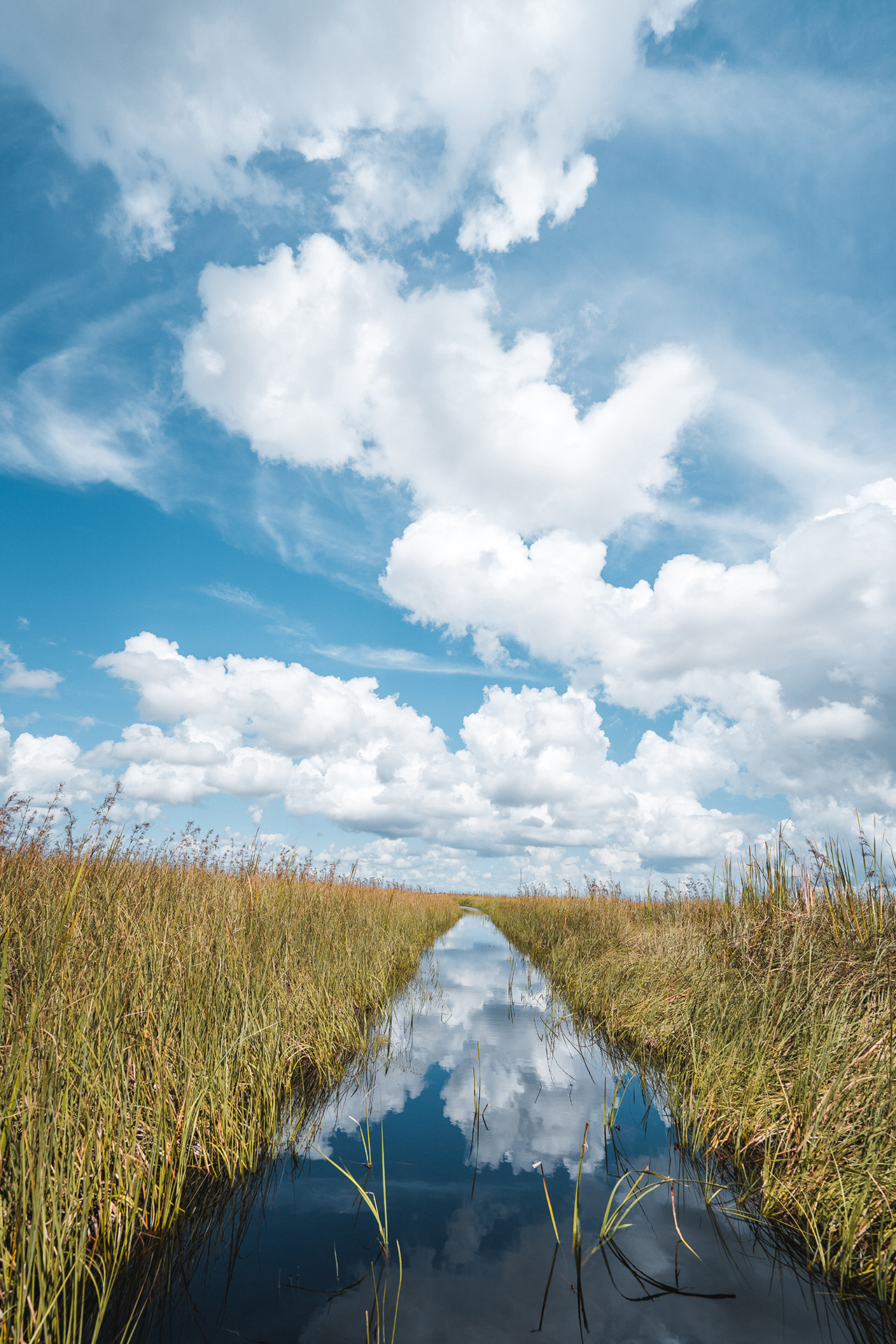
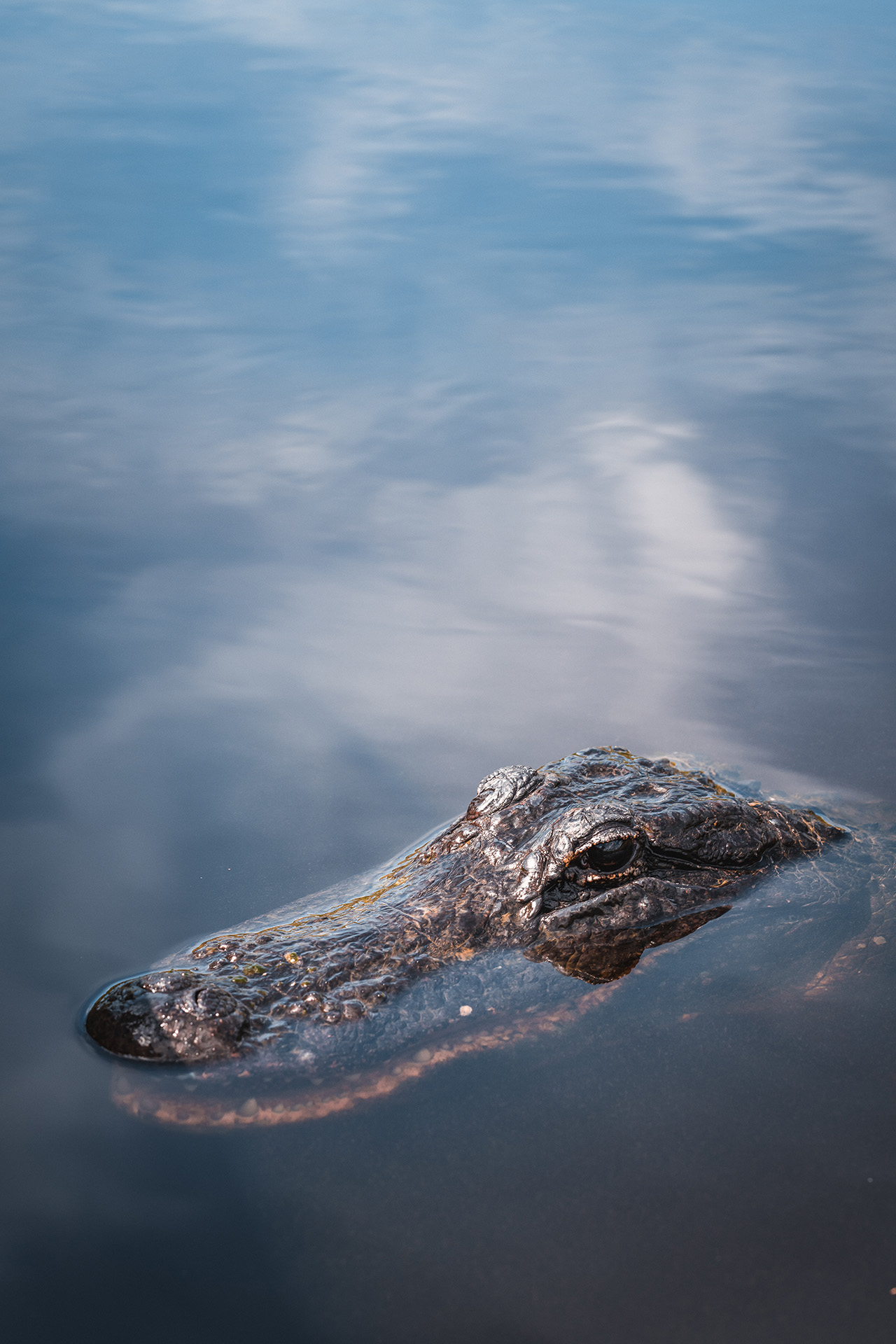
In the early 20th century, alligator populations in the southeastern United States suffered a steep decline due to overhunting by humans for their hides and meat. By the 1960s, alligator populations had declined to such an extent that in 1967 they were added to the very first list of American animals under the Endangered Species Preservation Act. As a result, conservation efforts to protect them began in the late ‘60s and ‘70s, focusing on regulating hunting, protecting critical habitats, and establishing captive breeding programs. These efforts were hugely popular and immediately successful, and alligator populations quickly rebounded to the point in 1987 where the species was downgraded from endangered to threatened. Today, the American alligator is no longer considered threatened, although it remains protected under special state laws. Their recovery is a testament to the effectiveness of dedicated conservation efforts and the importance of protecting and preserving critical habitats for wildlife. It’s also been helpful that they can reproduce quickly and that they grow rapidly enough to stand comfortably at the top of the Florida food chain.
As a result, the state of Florida (and others that are home to alligator populations) now allow hunting for a tiny fraction of the estimated 1.3 million alligators within the state’s borders. Though healthy in overall numbers, Florida’s has been careful to make sure the alligator does not return to a situation where it becomes a threatened species again. It’s a felony to kill or injure an alligator without a proper tag or by the wrong method, so legal alligator hunting now falls under three specific categories.
In the early 20th century, alligator populations in the southeastern United States suffered a steep decline due to overhunting by humans for their hides and meat. By the 1960s, alligator populations had declined to such an extent that in 1967 they were added to the very first list of American animals under the Endangered Species Preservation Act. As a result, conservation efforts to protect them began in the late ‘60s and ‘70s, focusing on regulating hunting, protecting critical habitats, and establishing captive breeding programs. These efforts were hugely popular and immediately successful, and alligator populations quickly rebounded to the point in 1987 where the species was downgraded from endangered to threatened. Today, the American alligator is no longer considered threatened, although it remains protected under special state laws. Their recovery is a testament to the effectiveness of dedicated conservation efforts and the importance of protecting and preserving critical habitats for wildlife. It’s also been helpful that they can reproduce quickly and that they grow rapidly enough to stand comfortably at the top of the Florida food chain.
As a result, the state of Florida (and others that are home to alligator populations) now allow hunting for a tiny fraction of the estimated 1.3 million alligators within the state’s borders. Though healthy in overall numbers, Florida’s has been careful to make sure the alligator does not return to a situation where it becomes a threatened species again. It’s a felony to kill or injure an alligator without a proper tag or by the wrong method, so legal alligator hunting now falls under three specific categories.

On public land, it’s possible to get a tag through the Statewide Alligator Harvest Program and potentially get the chance to harvest one of the 7000 or so alligators taken each year. It usually involves a pole, a line of some sort, and a treble hook to literally snag a part of the alligator and drag it to a boat or to shore so it can be dispatched by a bang-stick or other non-gun methods such as bows, crossbows, spears and spearguns. On private land, a much smaller number of alligators are allowed to be harvested by the private property owners or designated hunters. Each year, fewer than 2,000 are taken on private land. By far, the greatest number of alligators are taken in Nuisance Alligator Harvests, where almost 10k are taken each year.
On public land, it’s possible to get a tag through the Statewide Alligator Harvest Program and potentially get the chance to harvest one of the 7000 or so alligators taken each year. It usually involves a pole, a line of some sort, and a treble hook to literally snag a part of the alligator and drag it to a boat or to shore so it can be dispatched by a bang-stick or other non-gun methods such as bows, crossbows, spears and spearguns. On private land, a much smaller number of alligators are allowed to be harvested by the private property owners or designated hunters. Each year, fewer than 2,000 are taken on private land. By far, the greatest number of alligators are taken in Nuisance Alligator Harvests, where almost 10k are taken each year.
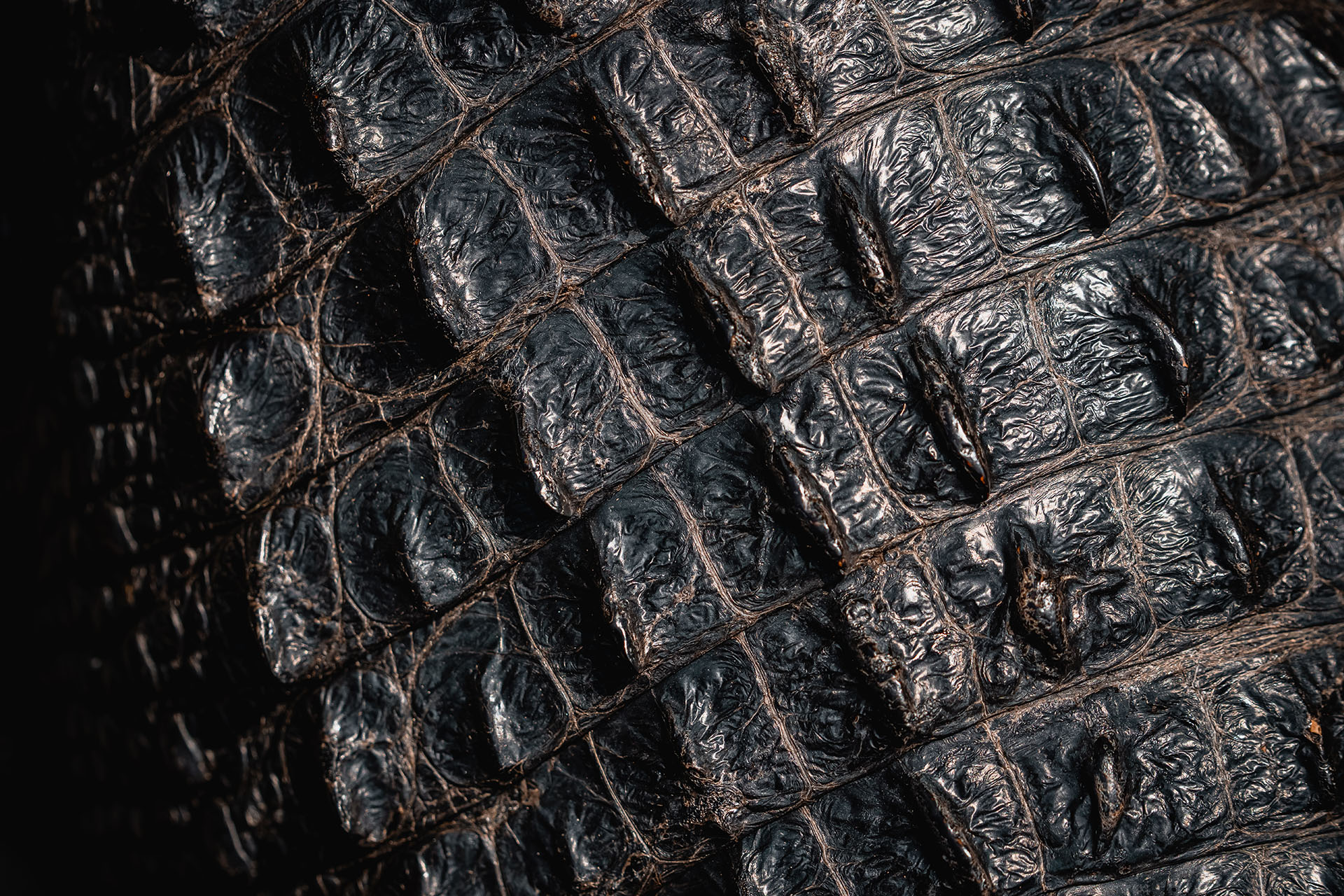
To get an understanding of what a Nuisance Alligator Harvest is, think about having a 300-lb gator show up in your swimming pool overnight. While it would make for some cool pictures, not being able to get into your pool without being eaten would be a bummer. Because gators can hoof it more than a mile in one overland jaunt, they can show up just about anywhere that doesn’t have a really high wall just about any time they want. Once one ends up in in your pool, pond, or golf course water hazard, it’s likely not leaving on its own if it likes what it’s doing. Below the length of four feet, they’re not really considered a nuisance, though you likely wouldn’t want to share your pool with one. As a result, specially licensed nuisance alligator trappers can participate in removing alligators when they have taken up residence where they shouldn’t. There are some alligator farms that will take displaced alligators, though most are harvested and sold, with their meat and hides being used commercially.
To get an understanding of what a Nuisance Alligator Harvest is, think about having a 300-lb gator show up in your swimming pool overnight. While it would make for some cool pictures, not being able to get into your pool without being eaten would be a bummer. Because gators can hoof it more than a mile in one overland jaunt, they can show up just about anywhere that doesn’t have a really high wall just about any time they want. Once one ends up in in your pool, pond, or golf course water hazard, it’s likely not leaving on its own if it likes what it’s doing. Below the length of four feet, they’re not really considered a nuisance, though you likely wouldn’t want to share your pool with one. As a result, specially licensed nuisance alligator trappers can participate in removing alligators when they have taken up residence where they shouldn’t. There are some alligator farms that will take displaced alligators, though most are harvested and sold, with their meat and hides being used commercially.
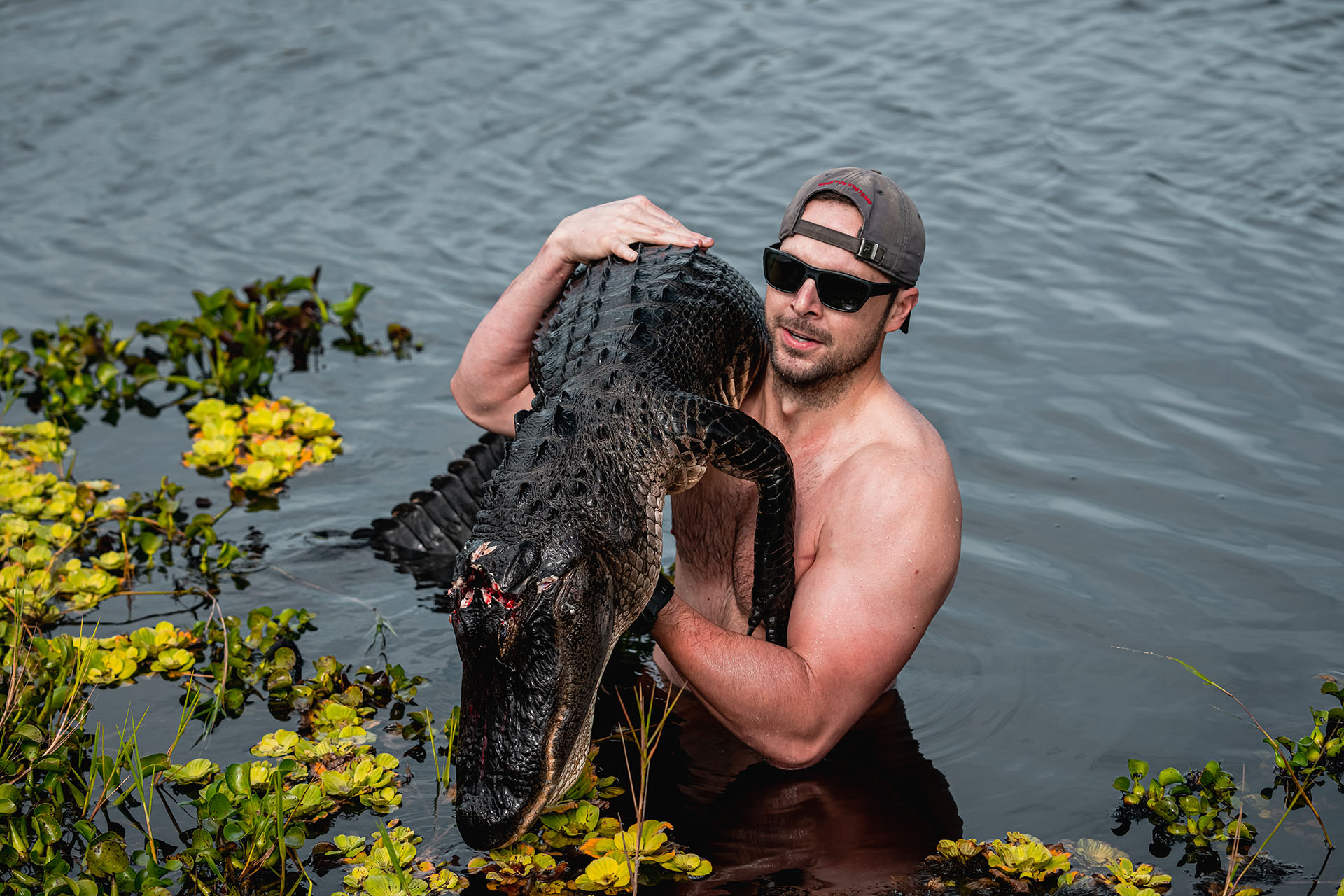
While it may seem harsh to have to harvest and kill the alligators that arrive in the wrong place at the wrong time, there really is no alternative. That’s because taking a large alligator out of one area and introducing it into new one is a recipe for environmental disaster for the new location. The new alligator, if big enough, will take over an entire ecosystem and cause havoc with the natural order that already exists. The larger the gator, the more likely it is to take down the rest of the equilibrium that exists in a territory with other established gators and the rest of the food chain. As a result, larger alligators are many times harvested when there’s a clear need to do so.
That’s how we ended up on a private cattle ranch west of Lake Okeechobee, sending up drones and trying to find the dinosaurs that had taken up residence there. Because fresh water is an absolute necessity on these ranches, large ponds and lakes are usually dug out in the sandy soil with earthmovers so that the cattle and other livestock can drink. Inevitably, some of the larger gators find their way to these properties, and folks like Mike can utilize private land tags to come in and take them away. Using firearms is legal in this situation, as long as it is on private land and meets the normal rules for firearms discharge.
While it may seem harsh to have to harvest and kill the alligators that arrive in the wrong place at the wrong time, there really is no alternative. That’s because taking a large alligator out of one area and introducing it into new one is a recipe for environmental disaster for the new location. The new alligator, if big enough, will take over an entire ecosystem and cause havoc with the natural order that already exists. The larger the gator, the more likely it is to take down the rest of the natural order that exists in a territory with other gators. As a result, larger alligators are many times harvested when there’s a clear need to do so.
That’s how we ended up on a private cattle ranch west of Lake Okeechobee, sending up drones and trying to find the dinosaurs that had taken up residence there. Because fresh water is an absolute necessity on these ranches, large ponds and lakes are usually dug out in the sandy soil with earthmovers so that the cattle and other livestock can drink. Inevitably, some of the larger gators find their way to these properties, and folks like Mike can utilize private land tags to come in and take them away. Using firearms is legal in this situation, as long as it is on private land and meets the normal rules for firearms discharge.

With that in mind, when hunting an alligator, between their skittishness if you get too close, their natural body armor, and the fact that they spend most of their time in and around water, you typically aim for the tiny target that is their brain. How big of a target, you ask? A monstrous 12-footer weighing more than 500 pounds has a tiny brain roughly the size of three olives. In most cases, you don’t have a second option anyway; the alligators sit partially or completely submerged, with only the top portion of their snout and eyes above water. That leaves you with a target about three inches wide by two inches long to shoot for to make sure the alligator is humanely killed and doesn’t have the ability to submerge and swim away wounded.
We used our AR15s chambered in 5.56. More firepower than that would be overkill and less would run the risk of not penetrating the skull if the grazing angle was too flat off or if we were off target by an inch. By stalking to within 100 yards of the big reptiles, we were able to take our time and get our shots off from the prone position or off a tripod, based on what the situation and terrain required. Over the course of two days, and a lot of hours driving around thousands of acres of ranch, launching drones and checking out a lot of reptiles, we were able to take three shots and harvest three alligators with a combined weight of about 600 pounds.
Getting the privilege of shooting an alligator is an amazing thing to ponder, considering how badly their situation was 60 years ago. With their populations coming back so quickly, more and more people are getting the chance to put themselves close to an animal that very few might ever think about hunting. We can say from experience that it’s amazing. It involves a lot of patience and a lot of traversing over a completely different environment than many hunters are accustomed to. There are also a completely different set of rules for finding and harvesting your animal, and putting your round exactly on target is vital to success. The great news is that their meat, like chicken, is incredibly easy to cook in a variety of ways. And one gator provides a lot of it. We want to say thanks to Mike and Chris for providing their expertise on the invasive species situation in southern Florida, and of course for getting us close to the big gators. Thanks to them, we’re going to have wild boar and gator on the menu for a long, long time.
In hunting an alligator, you have a pretty small target to hit with their brain. In many cases, the alligators are partially or completely submerged, with only the top portion of their snout and eyes above water. That leaves you with a target about four inches wide by two inches long to shoot for to make sure the alligator is humanely killed and doesn’t have the ability to submerge and swim away wounded. We used our AR15s chambered in 5.56. More firepower than that would be overkill and less would run the risk of not penetrating the skull if the grazing angle was too flat off or if we were off target by an inch. By stalking to within 100 yards of the big reptiles, we were able to take our time and get our shots off from the prone position or off a tripod based on what the situation and terrain required. Over the course of two days, and a lot of hours driving around thousands of acres of ranch, we were able to take three shots and harvest three alligators with a combined weight of about 600 pounds.
We used our AR15s chambered in 5.56. More firepower than that would be overkill and less would run the risk of not penetrating the skull if the grazing angle was too flat off or if we were off target by an inch. By stalking to within 100 yards of the big reptiles, we were able to take our time and get our shots off from the prone position or off a tripod, based on what the situation and terrain required. Over the course of two days, and a lot of hours driving around thousands of acres of ranch, launching drones and checking out a lot of reptiles, we were able to take three shots and harvest three alligators with a combined weight of about 600 pounds.
Getting the privilege of shooting an alligator is an amazing thing to ponder, considering how badly their situation was 60 years ago. With their populations coming back so quickly, more and more people are getting the chance to put themselves close to an animal that very few might ever think about hunting. We can say from experience that it’s amazing. It involves a lot of patience and a lot of traversing over a completely different environment than many hunters are accustomed to. There are also a completely different set of rules for finding and harvesting your animal, and putting your round exactly on target is vital to success. The great news is that their meat, like chicken, is incredibly easy to cook in a variety of ways. And one gator provides a lot of it. We want to say thanks to Mike and Chris for providing their expertise on the invasive species situation in southern Florida, and of course for getting us close to the big gators. Thanks to them, we’re going to have wild boar and gator on the menu for a long, long time.


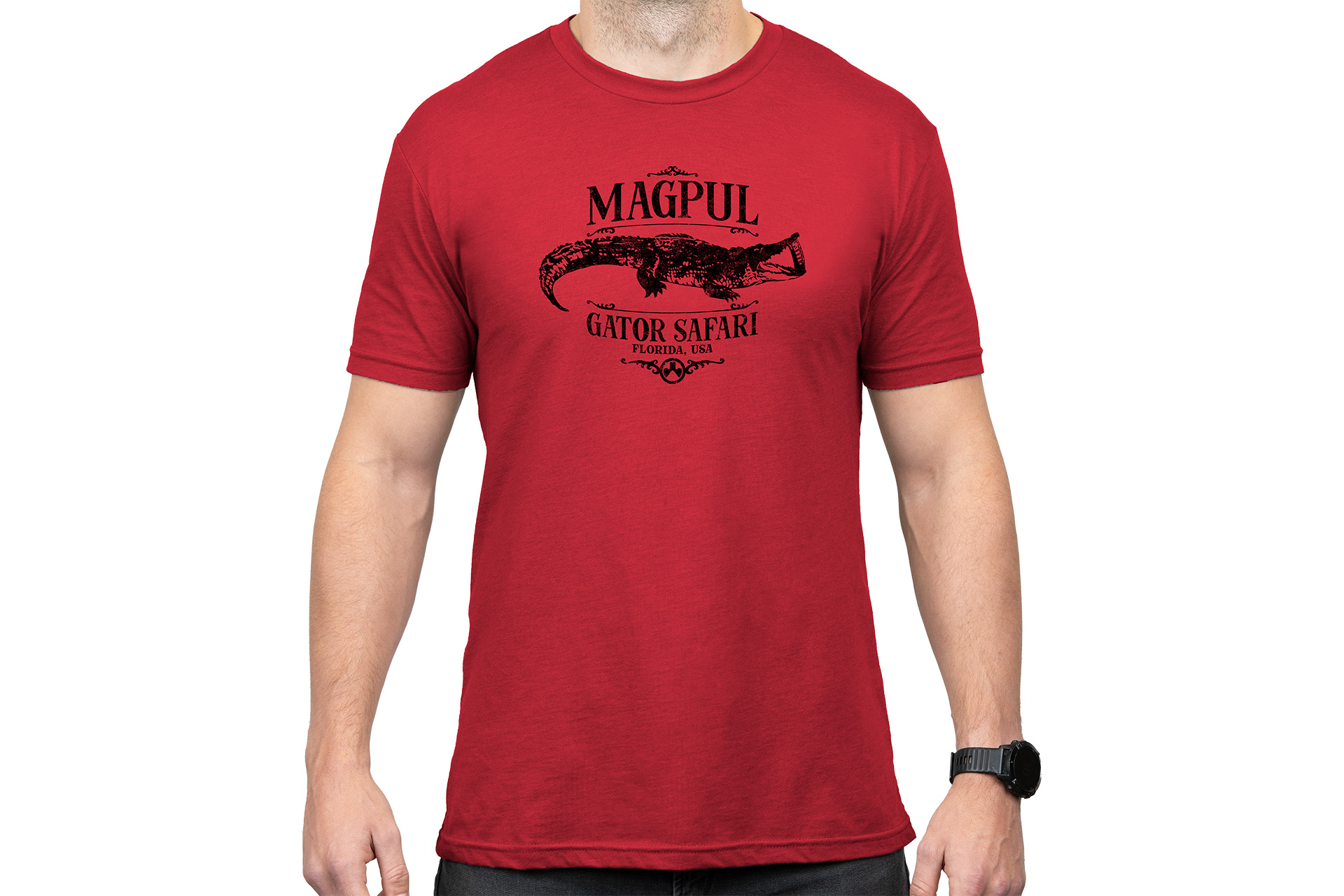




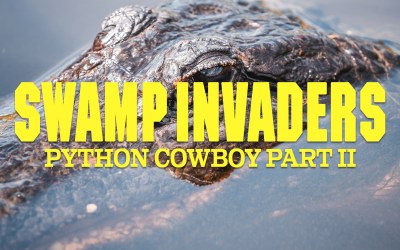
Are grenades allowed? Asking for a friend.